One of the more common comments I get is, "I really need a two-seater. Is there a two-seat Fly Baby?"
The answer is yes...and no. Pete Bowers did not design a two-seat Fly Baby...although he eventually developed a whole new two-seater called "Namu II"..
If you go to page 9-3 of the plans, you'll see Pete's discussion of what he calls "The Two Seater Problem." His opinons can be summarized in his final paragraph: "The designer stoutly maintains that the costs of converting FLY BABY to a two-seater far outweighs any anticipated advantage. You just can't make anything but a mediocre two-seater out of a good small single-seater..."
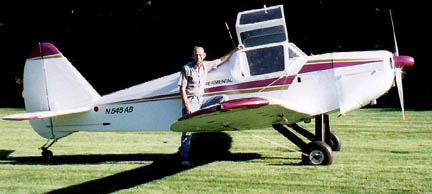 However,
over
the years, several people have adapted the basic Fly Baby design
to be able to carry a passenger. The easiest way is to widen
the fuselage to make a side-by-side two-seater. This has a
big drag disadvantage, in that you now have a wide, open
cockpit. In addition to the drag, there's a lot more airflow
disturbance over the tail The best way to handle that would
be to put a raised turtledeck and a canopy on it, like Art
Blodgett did. Here's what Art has to say: "I liked the
looks and simplicity of the flybaby design but wanted a two
place aircraft. The fuselage is 40 inches wide at the cabin,
the horizontal tail surface span was increased to 10 feet, and the
vertical tail span increased 12 inches. I left the wing design and
dimensions stock as per the plans. The landing gear legs were made
wider by an inch and reinforced with 4130 tubing. The plane was
built with a full gyro panel and electrical system. the engine and
prop are from a 1964 Cessna 150. (Continental 0-200 A)....My empty
weight ended up right at 900 lbs and I've set the gross weight at
1350 lbs."
However,
over
the years, several people have adapted the basic Fly Baby design
to be able to carry a passenger. The easiest way is to widen
the fuselage to make a side-by-side two-seater. This has a
big drag disadvantage, in that you now have a wide, open
cockpit. In addition to the drag, there's a lot more airflow
disturbance over the tail The best way to handle that would
be to put a raised turtledeck and a canopy on it, like Art
Blodgett did. Here's what Art has to say: "I liked the
looks and simplicity of the flybaby design but wanted a two
place aircraft. The fuselage is 40 inches wide at the cabin,
the horizontal tail surface span was increased to 10 feet, and the
vertical tail span increased 12 inches. I left the wing design and
dimensions stock as per the plans. The landing gear legs were made
wider by an inch and reinforced with 4130 tubing. The plane was
built with a full gyro panel and electrical system. the engine and
prop are from a 1964 Cessna 150. (Continental 0-200 A)....My empty
weight ended up right at 900 lbs and I've set the gross weight at
1350 lbs."
Note that Art is operating at a gross weight almost 400 pounds higher that stock. This, of course, reduces the ultimate G-capability of the airplane, unless some changes have been made. In the plans, Bowers says you can retain the 3/4" spars, but you should go to 5/32" bracing wires and the appropriately rated turnbuckles.
Most
guys,
though,
seem to want a tandem two-seater like a PT-19. This is a
rather more difficult re-design problem due to the CG changes
involved. I have heard of at least two that have flown, and
one of them is fairly successful. The photo shows Victor
Meznarsic's Fly Baby, which has been flying for twenty-five years
or more. The front (passenger) cockpit on this airplane is
rather cramped; the word I get is that it's not really big enough
for an adult. As you can see from the photo, the main
cockpit is moved aft...due to the taper of the fuselage, the
shoulder room is a bit narrower than stock.
Other problems? Well, with any tandem-seat airplane, the visibility from the aft seat (the PIC seat) is going to be fairly poor...you've not only got more fuselage in front of you, you've also got someone else's fat head. The rear seat is the PIC seat, as the front pit usually ends up right on the CG. It's easier to plan on the pilot sitting in the back seat all the time than accept the wide shift in CG when you carry a passenger.
It's not to say the problems aren't solvable. Bob Pearce of
Saskatchwan based his two-seat "Skybaby 2" on the Fly Baby
design. Many aspects were resized...for instance, the
fuselage longerons are 1/8" larger, the spars are 1/16" thicker,
and the wing is two inches broader in chort and about two feet
wider in span. It's powered by an O-235, and with a full
electrical system, has a 813-pound empty weight. The
vertical fin was resized to handle the additional power (and the
additional turbulence from the second cockpit, and a turnover
pylon was installed betweent the two seats, something like a
PT-19.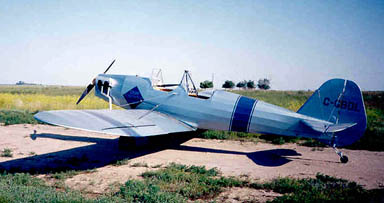
There are a couple of other people working on tandem-seat Fly Babies. Dave Munday is sharing information on his web page, but I don't believe he's going to issue plans detailing the necessary changes.
The airplane had a Rotec Radial engine installed. This was
*really* a nice looking bird. I flew this airplane back in
April 2004...see my pilot
report.
What happened to the Classic? Well, we don't really
know...except the Hevle folks have dropped out of sight. The
plans for the Classic are no longer available. The prototype
was sold to the Rotec company, who shipped it to their
headquarters in Australia and are using it for a
demonstration/test aircraft.
A number of sets of Hevle plans were sold, and these occasionally
come up for sale. I bought a set, in fact. The Hevle
plans consisted solely of the new fuselage truss arrangement to
accommodate the second seat. It was expected that the
builder would also obtain a set of standard plans (or use the EAA
magazine articles) to build the aircraft.
Here's a comparison between the fuselage truss design for a stock
Fly Baby and that of the Hevle Classic. Note that the front
seat is in the same location as the stock airplane, but the wing
is shifted about a foot further aft to handle the CG shift of the
new aft seat.

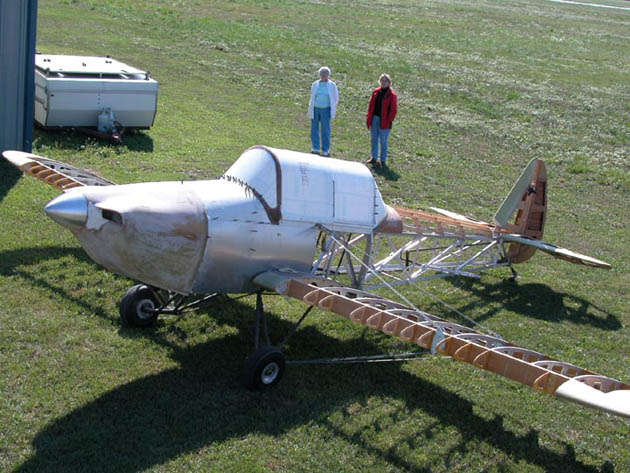
I never flew Namu, but I did sit in it during the mid-80s. The cockpit was about the same width as a Cessna 150. Visibilily to the sides and back was good, though that tall nose did obstruct forward visibility for taxi. Compared to N500F, Pete has spent some time on the creature comforts; the seats were comfortable, and the cockpit sidewalls had upholstered trim panels.
Namu didn't catch on. By the time Namu came out, people
were building fast fiberglass airplanes like Variezes and hot rods
like the T-18. I believe Pete sold a few sets of plans, but only
one or two examples (other than the prototype) were built.
One had an eye-catching paint job, though...it was painted like a
killer whale.
Here are some recent photos of Pete's original Namu, sent in by
the current owner, Mike Madrid. Pretty attractive, in these
shots.
Click Here for more
information on the Namu II.
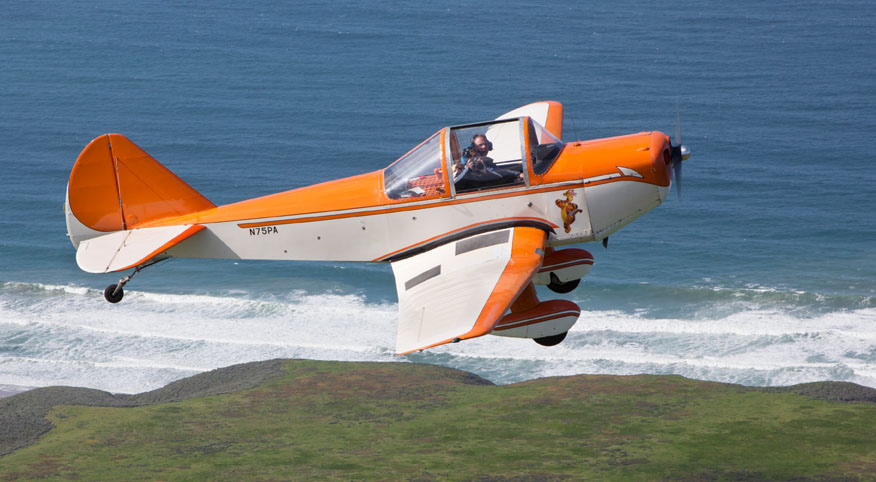
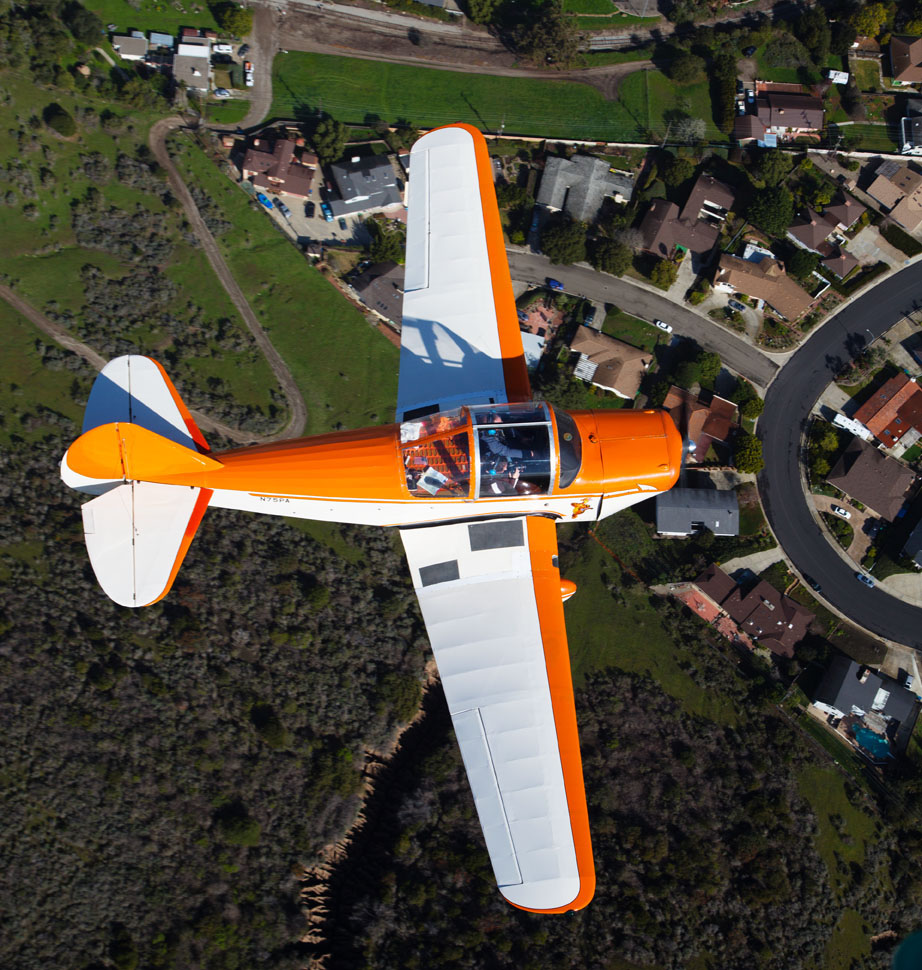
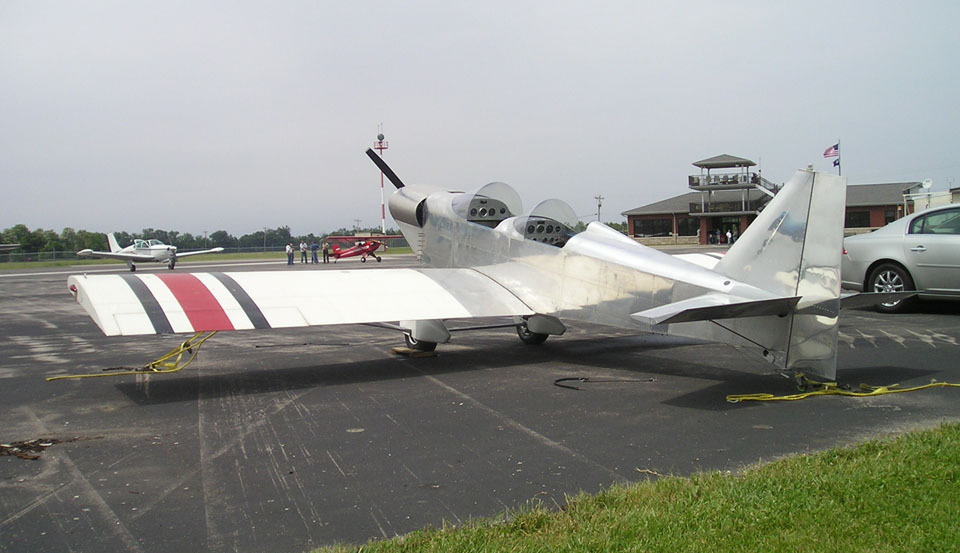
Comments? Contact Ron Wanttaja.